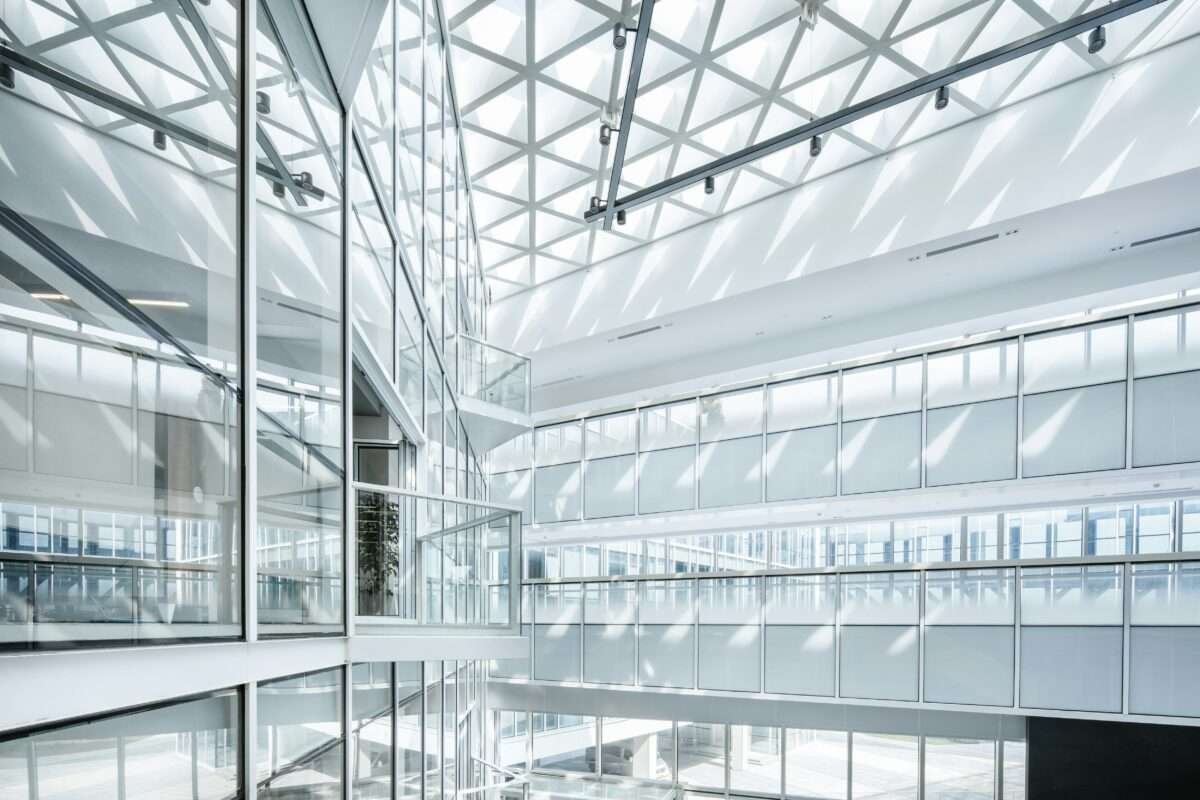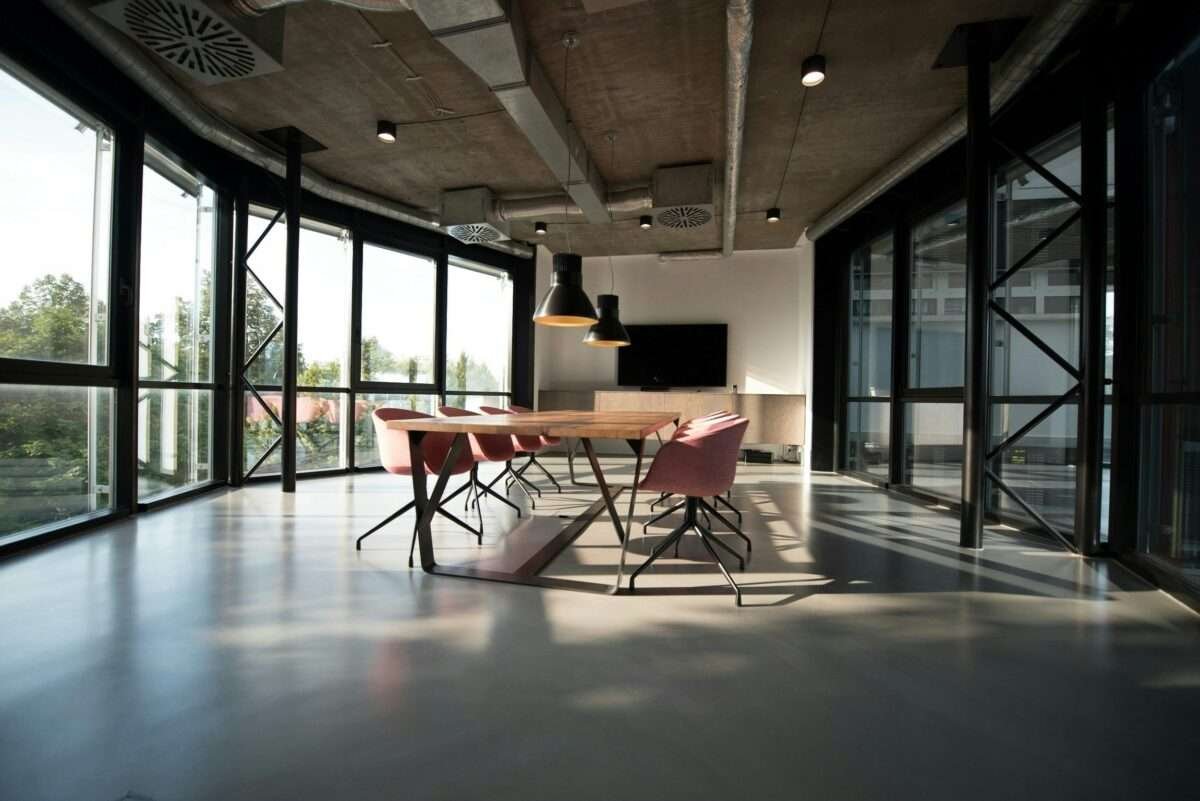How we build and design our commercial spaces speaks volumes about our values and goals as a society. From towering skyscrapers that shape city skylines to the cozy pop-up coffee shops on your local corner, commercial architecture is the literal embodiment of our economic activity, lifestyle choices, and collective identity. But what really is commercial architecture, and why does it matter?
In this expansive article, we’ll unpack the layers of commercial architecture, explore its significance in our daily lives, examine its role in upholding social responsibility, project the trends that are shaping the future of the industry, and ultimately, showcase how it can be a powerful tool for your business.

Commercial Architecture 101
Commercial architecture is the specialized field of designing buildings and spaces primarily for business and commercial use. It takes into account the unique requirements of corporate and retail ventures, focusing not just on aesthetics but also on functionality, brand representation, and customer experience. At the heart of this architectural subtype is a blend of form and function, striving to create spaces that are both visually striking and operationally efficient.
Key Aspects of Commercial Architecture
- Client-Aimed Design: Tailoring the architectural design to fit the specific needs and visions of the client, ensuring their brand and values are echoed throughout the space.
- Sustainability: Implementing eco-friendly practices and materials to minimize environmental impact, while also considering energy efficiency and long-term operational savings.
- Technology Integration: Incorporating the latest technology not only in the construction process but also within the finished spaces to enhance functionality and user experience.
- Accessibility: Designing spaces that are inclusive and accessible to everyone, meeting legal requirements and promoting a universal design approach.
- Space Optimization: Maximizing the use of space in a manner that promotes efficiency and flexibility, accommodating various activities and functionalities.
- Aesthetic Appeal: Crafting visually appealing structures that make a statement and contribute positively to the urban landscape.
- Safety and Compliance: Ensuring that all designs comply with relevant building codes and regulations, prioritizing the safety and well-being of occupants.
For any business owner or stakeholder, understanding the principles of commercial architecture is crucial, as it can dramatically influence the success and identity of your enterprise.
The Role of Commercial Architects
Commercial architects are the visionaries and problem solvers. They’re trained professionals with a deep understanding of structural integrity, spatial dynamics, environmental impact, and human psychology as it relates to built environments. Their role extends from conceptualizing a project to overseeing its construction, ensuring that the final product not only meets but exceeds the client’s expectations.
These professionals collaborate with various stakeholders, including business owners, construction teams, and interior designers, to deliver innovative design solutions that align with business objectives and customer needs.
The Significance of Commercial Architecture
The influence of commercial architecture is not confined to the aesthetic appeal of the buildings it creates but extends to the very fabric of our cities and our daily lives.
Economic Impact
Commercial architecture, being an integral part of the business landscape, has a direct impact on the economy. Well-designed commercial spaces can boost productivity and employee morale, enhancing the business’s bottom line. Investor appeal and marketability are often tied to the striking nature of a building’s architectural design, with many iconic structures becoming synonymous with success and brand recognition.
Cityscapes and Brand Image
The structures we build contribute to the collective image and identity of a city or a business district. They serve as landmarks, signaling both to locals and tourists that they have arrived. Commercial architecture is often the first taste of a brand that a consumer encounters, thus serving as a powerful branding tool.
Daily Life
Commercial architecture impacts our daily experiences, shaping the environments where we shop, work, and socialize. The thoughtful design of a retail space can transform a routine shopping trip into an enjoyable experience, encouraging customers to return. Office buildings, designed with employee well-being in mind, can significantly improve productivity and job satisfaction by incorporating natural light, open spaces, and areas for rest and collaboration.
Even the layout of a city’s commercial district influences our behavior and choices, helping in navigation and creating communal spaces that encourage social interactions. Through these subtle yet significant ways, commercial architecture touches every aspect of our daily lives, making the mundane exciting and turning spaces into places of connection and growth.
Social Responsibility in Commercial Architecture
Many commercial architects are championing environmentally friendly design practices, creating structures that have a reduced carbon footprint and a positive impact on the local ecosystem. It’s not just about going green; it’s about creating environments that are livable, equitable, and respectful of their surroundings.
Socially responsible design goes beyond the environmental sphere to include features that make spaces more accessible and inclusive. Considerations such as wheelchair accessibility, natural lighting for better health, and open public spaces that foster community engagement are now integral to the design process.

Trends and Future of Commercial Architecture
The field of commercial architecture is dynamic and constantly evolving, shaped by global trends and technological advancements. Here are some of the trends and innovations that are currently shaping the future of commercial architecture.
Integration of Technology
In the swiftly evolving landscape of commercial architecture, the integration of technology stands as a pivotal element, drastically influencing both the functionality and the sustainability of commercial buildings. This strategic incorporation wields the power of advanced systems and smart solutions to optimize building operations, enhance security, improve energy efficiency, and provide a superior consumer experience. The implementation of technologies such as IoT (Internet of Things) devices, automation systems, and AI-driven energy management systems not only cater to the immediate needs of building occupants but also anticipate future demands, ensuring spaces can adapt and evolve over time.
Furthermore, technology integration contributes significantly to the economic aspect of commercial architecture by potentially lowering operational costs and increasing property value. It represents a forward-thinking approach that aligns with the current digital era, positioning businesses as leaders in innovation and environmental stewardship.This evolution in commercial architecture goes beyond mere aesthetics or structure—it’s about creating intelligent environments that respond to the needs of today while being mindful of tomorrow’s challenges.
Sustainable Design Becomes the Norm
Sustainable design in commercial architecture is quickly transitioning from a niche preference to a widespread standard, driven by a combination of environmental imperatives and shifting societal values. This trend towards sustainability is driven by the urgent need to address climate change and the depletion of natural resources, making eco-friendly practices not just desirable but essential for the long-term viability of our planet. Furthermore, there is an increasing recognition of the economic benefits that sustainable buildings offer, including reduced energy costs, improved occupant health, and enhanced public image, which can lead to increased rental rates and property values.
Legislative pressures also play a crucial role, as governments worldwide implement stricter environmental regulations and incentivize green building practices through tax benefits and grants. These regulatory frameworks are pushing the industry towards more sustainable solutions, aligning financial and environmental goals.
Additionally, the growing consumer and employee demand for environmentally responsible and healthy workspaces is compelling businesses to adopt green practices, making sustainable design a key factor in attracting and retaining talent and customers.
Architects and builders are responding by incorporating sustainable materials, energy-efficient systems, and innovative waste-reduction techniques into their projects. Green building certifications, such as LEED and BREEAM, are becoming sought-after benchmarks, signifying a building’s environmental performance to clients and investors. The emergence of these trends indicates a pivotal shift in the commercial architecture landscape, where sustainable design practices are increasingly viewed as the standard rather than the exception, emphasizing a commitment to environmental stewardship and social responsibility.
Why This Matters for Your Business
Whether you’re planning to construct a new office, retail space, or industrial complex, commercial architecture should be a central consideration in your strategic planning. Engaging with the right architectural partners can elevate your brand, improve customer relations, and create a space that is not only functional but also a socially responsible asset.
By understanding the principles of commercial architecture and staying ahead of the trends, you can ensure that your business’s physical presence is optimized for success in the modern world.
Ready to Transform Your Commercial Space?
In an era where business needs and environmental considerations are rapidly evolving, it’s paramount to choose an architectural partner who not only understands the complexities of commercial architecture but also possesses the foresight and innovation necessary for sustainable and flexible design solutions. Keiser Design Group stands at the forefront of integrating these crucial elements, ensuring that your commercial space is more than just a building—it’s a beacon of sustainability, functionality, and forward-thinking.
Whether you’re looking to construct a state-of-the-art office complex, renovate a retail space, or develop an eco-friendly industrial facility, our team is equipped with the expertise and passion to bring your vision to life. At Keiser Design Group, we believe in creating environments that embody your business values while propelling you toward future success.
Don’t wait to make a positive impact with your commercial space. Contact Keiser Design Group today to start designing a space that serves not only your business needs but also contributes to a more sustainable and inclusive world.


